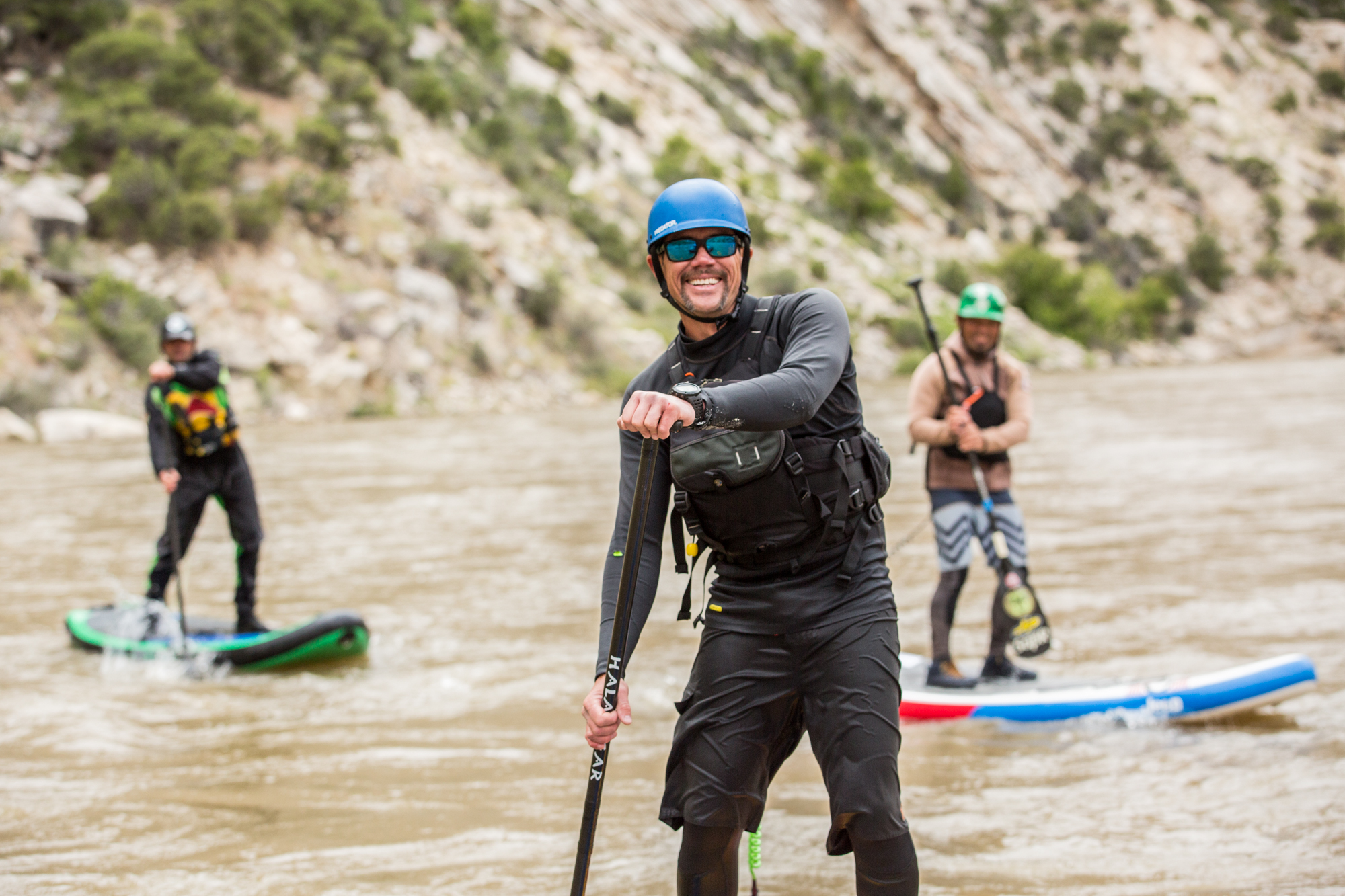
To Leash, Or Not To Leash?
06/05/18
That should be the question, but is it? Am I leashing because it’s an accepted practice amongst river paddlers? Am I leashing to protect my $1500 investment? Am I considering all the implications of wearing a leash on the river?
To open let me say that a leash on the river is a potential. It’s a potential help in certain situations, but it can be a potential hazard just as quickly. You wouldn’t tie a string from your board to yourself, would you? Of course not. But many of us regularly do just that when we leash, and I’ll tell you why.
There are many leashes on the market and I’m not going to promote or knock any of them. I want to put some thoughts into your head so you can make your own decisions. Appropriate river leashes have some kind of release built into them. We’ve all seen them. They rely on us to pull a small, brightly colored ball and, voila! We’re no longer attached. In theory, that’s that. Have you ever taken a swim and remounted your board to find your leash wrapped around your foot? What if you also managed to put a twist in it as well? Not that farfetched given the types of whitewater we are paddling these days. For all intents and purposes, you’ve got a knot. It’s tied around your thigh let’s say. You pass on one side of a rock, tree, or bridge pylon and your board goes on the other. The current turns you and you head downstream. The leash knot slips to your ankle and tightens. You find your quick release and pull. The D-ring comes off your PFD, but you go nowhere. Now what? Well, you could grab your thigh with both hands and try to pull your way to your ankle so you can attempt to slip the knot off or cut at it. But that may not work. Let’s look at ways to avoid this.
Some leashes have Velcro overlaps at both ends. I like these leashes. When completely overlapped these will hold under extreme tension, which you may sometimes want. When you shorten the overlap, you reduce the amount of tension it takes to pull apart. You can test this on dry land by pulling on the leash. Find an amount of tension you are comfortable with for the run, or surf you are doing. Now, if you get in trouble, both ends can release even if you don’t get your quick release. Which is great because how often do you practice reaching for your quick release underwater while the river is stuffing however many CFS right up your nose? It’s also great because it works even if you’re unconscious, or managed to dislocate one or both shoulders.
A leash is to some degree a system of rigging. Those of you with Swiftwater Rescue under your belt know that you never use a non-locking carabiner in a system. The same goes when leashing. Imagine you have your leash clipped to the webbing of your type 3 (no quick release rescue belt) pfd with the non-locking biner provided with the leash. You take a swim and somehow in the mayhem, your biner gate comes in contact with the bungee or a D-ring on your board. It clips. You are now heading downstream clipped to your board with your head underwater trying to get yourself composed while you head straight into whatever terrible hazard is downstream. A bit unlikely, but not impossible and certainly something to consider.
There’s a lot to talk about when we talk about leashes. I’m sure there’s even more to consider than what I offer here. I’ll close by asking that we all promote talking about river leash safety amongst our paddling groups, and if you see someone about to launch with an ankle leash on, consider trying to stop them and offer some education.
Thanks, and happy paddling!
-Matt Buckley
VP of Operations, Adrift Dinosaur
Hala Gear Team Rider



